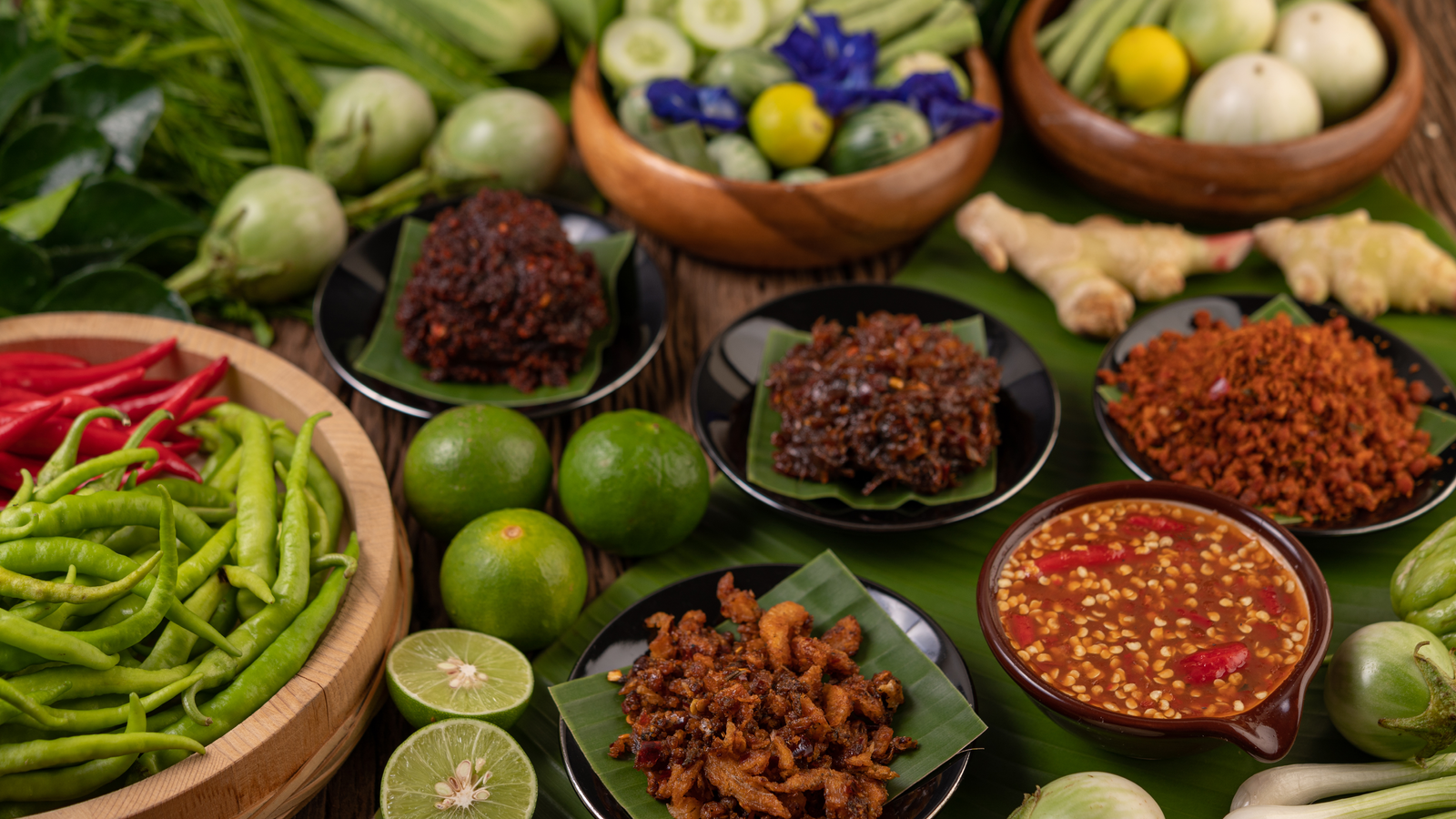Local Food & Culinary Adventures in Indonesia: Exploring Street Food, Regional Recipes & Sustainable Dining 🌶️🍜

Indonesia’s culinary landscape is as diverse as its 17,000 islands, each offering unique flavors, traditions, and cultural stories. From sizzling street food to rich regional recipes like Padang cuisine, and the rise of sustainable dining, Indonesian food is a journey for the senses. This guide dives deep into the country’s most iconic dishes, their cultural significance, and how modern dining trends are shaping Indonesia’s food future.
🌮 The Vibrant World of Indonesian Street Food
Indonesian street food is a bustling, flavorful affair—where smoky satay skewers, crispy martabak (stuffed pancakes), and spicy bakso (meatball soup) tempt passersby. Here are some must-try street foods:
1. Satay (Sate) – The King of Indonesian Street Food
- Origin: Java, but popular nationwide.
- What it is: Skewered, grilled meat (chicken, beef, or goat) with peanut sauce.
- Cultural Connection: Often served at celebrations like weddings and festivals.
2. Nasi Goreng – Indonesia’s Fried Rice Delight
- Origin: Nationwide, with regional twists.
- What it is: Fried rice with sweet soy sauce, chili, and toppings like fried egg or shrimp crackers.
- Fun Fact: Named one of the world’s most delicious foods by CNN Travel.
3. Martabak – Sweet or Savory Pancake Heaven
- Origin: Influenced by Middle Eastern traders.
- Varieties:
- Martabak Manis (Sweet) – Filled with chocolate, cheese, or peanuts.
- Martabak Telur (Savory) – Stuffed with eggs, minced meat, and scallions.
4. Bakso – Indonesia’s Comfort Meatball Soup
- Origin: Java, now a national favorite.
- What it is: Bouncy meatballs in savory broth with noodles and fried shallots.
- Cultural Fact: Former US President Barack Obama famously loves bakso!
🍛 Exploring Regional Indonesian Cuisine: From Padang to Bali
Indonesia’s regional recipes reflect its diverse cultures, spices, and cooking techniques. Here are some standout regional cuisines:
🔥 Padang Cuisine (West Sumatra) – A Fiery Feast
- Key Dishes:
- Rendang – Slow-cooked beef in coconut and spices (UNESCO-listed as an intangible cultural heritage).
- Sate Padang – Turmeric-spiced beef satay with thick yellow sauce.
- Dining Style: Hidang (served all at once, pay for what you eat).
🌿 Javanese Cuisine – Sweet & Subtle Flavors
- Key Dishes:
- Gudeg – Young jackfruit stew with palm sugar, served with rice and chicken.
- Tempeh – Fermented soybean cake, a protein-rich staple.
🍖 Balinese Cuisine – Rich in Ritual & Flavor
- Key Dishes:
- Babi Guling – Suckling pig roasted with turmeric and spices.
- Lawar – Minced meat mixed with coconut, spices, and blood (traditional ceremonial dish).
🦐 Manado Cuisine (North Sulawesi) – Bold & Adventurous
- Key Dishes:
- Cakalang Fufu – Smoked skipjack tuna.
- Tinoransak – Spicy pork stew with bamboo shoots.
🌱 Sustainable Dining in Indonesia: A Growing Movement
With global awareness of sustainable dining, Indonesia is embracing eco-friendly food practices:
1. Farm-to-Table Restaurants
- Example: Locavore (Bali) – Uses 95% locally sourced ingredients.
- Why It Matters: Reduces carbon footprint and supports local farmers.
2. Zero-Waste Cooking
- Example: Using banana leaves instead of plastic for wrapping food.
- Traditional Practice: Botram (Sundanese communal eating) minimizes food waste.
3. Plant-Based & Vegan Indonesian Food
- Rising Trends: Vegan versions of rendang, tempeh bowls, and gado-gado.
- Popular Spot: Sage (Bali) – Fully plant-based Indonesian-Western fusion.
📜 Cultural Stories: How Food Connects to Indonesian Heritage
Indonesian dishes are more than just meals—they carry centuries of history, trade, and tradition:
1. The Spice Trade’s Influence
- Nutmeg, cloves, and pepper attracted European colonizers, shaping Indonesian cuisine.
- Dishes like gado-gado (peanut sauce salad) show Chinese and Dutch influences.
2. Ritual Foods in Ceremonies
- Nyepi (Balinese New Year): Requires pre-cooked foods since cooking is forbidden.
- Selamatan (Javanese tradition): communal meals to celebrate life events.
3. Colonial Legacies in Food
- Kue lapis (layered cake): Dutch-influenced dessert.
- Bitterballen (Dutch-Indonesian fusion snack).
🍽️ How to Experience Indonesian Food Like a Local
- Visit a Traditional Market – Like Pasar Santa (Jakarta) or Pasar Badung (Bali).
- Try a Warung (Local Eatery) – For authentic, budget-friendly meals.
- Take a Cooking Class – Learn to make sambal or nasi goreng from experts.
- Join a Food Tour – Jakarta’s “Street Food Safari” or Bali’s “Night Market Adventure.”
🌏 Final Thoughts: Why Indonesian Cuisine is a Must-Try
From street food gems to heritage-rich regional recipes and innovative sustainable dining, Indonesia’s food scene is a feast for the soul. Each bite tells a story—of trade, tradition, and community.
So, are you ready to embark on a culinary adventure through Indonesia? �✈️
❓ Frequently Asked Questions (FAQs)
1. What is the most famous Indonesian street food?
Answer: Satay (Sate) and Nasi Goreng are among the most iconic.
2. What makes Padang cuisine unique?
Answer: It’s known for its rich, spicy coconut-based dishes like rendang and serving style (hidang).
3. Is Indonesian food spicy?
Answer: Some dishes are (like Sambal Matah), but many have mild, sweet flavors (e.g., Gudeg).
4. Where can I find sustainable dining options in Indonesia?
Answer: Bali leads with spots like Locavore and Sage, but Jakarta and Yogyakarta also have eco-conscious cafes.
5. What is the best way to explore Indonesian food culture?
Answer: Join a food tour, visit local markets, and dine at warungs for an authentic experience.
By exploring Indonesian street food, regional recipes, and sustainable dining, you’re not just eating—you’re experiencing centuries of culture, history, and passion. Selamat makan! (Enjoy your meal!) 🍽️✨
Discover more from SuqMall
Subscribe to get the latest posts sent to your email.
